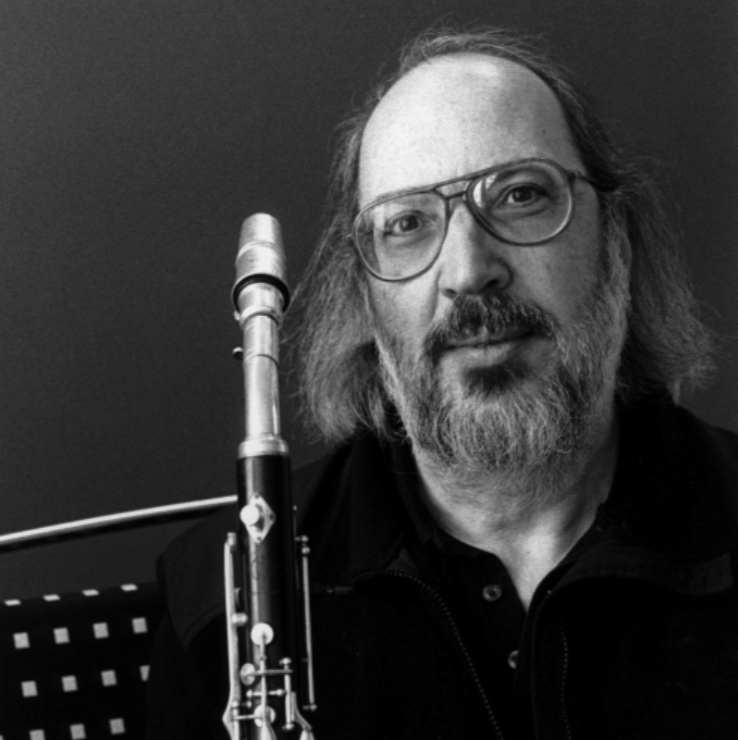
|
contents | jazz | |||||||||||||
| Gianluigi Trovesi, Stefano Montanari - Stravaganze consonanti. Musicians doing what they love / SPECTRUM CULTURE  "The need to tell my musical story derives from a long period of artistic activities connected to both classical and jazz circles. This story to be my own must speak of my home and my multiple musical loves; it must contain my cultural identity, employing the vocabulary that forms my musical language." "The need to tell my musical story derives from a long period of artistic activities connected to both classical and jazz circles. This story to be my own must speak of my home and my multiple musical loves; it must contain my cultural identity, employing the vocabulary that forms my musical language."Gianluigi Trovesi More than 20 years ago Umberto Eco singled out "the quest for ancient timbres and classical echoes" that contributed, alongside "original inventions" to the special character of Gianluigi Trovesi's art. The clarinets and saxophone of the reedman from Italy's Lombardy region have spoken a sort of polyglot tongue almost from the outset, and each of his ECM albums has differently combined, contrasted and blended ingredients of diverse idioms. On Stravaganze consonanti, an inspired collaboration with noted baroque violinist and conductor and Stefano Montanari, Trovesi extends the line of musical enquiry posited on his operatic Prufumo di violetta album. Supported this time by a cast of players well-versed in the ancient sounds of period instruments and the art of historical performance practice, he looks anew at music of the renaissance and the baroque – at Purcell, Dufay, Trabaci, Desprez and more. He also adds compositions of his own and stirs some additional improvising with percussion and electronics man Fulvio Maras into the intoxicating brew. As Montanari writes in the CD booklet, "Trovesi grasps the power and refinement of a language that passes in the blink of an eye from Dufay to Purcell, arriving at jazz without ever losing the profound meaning of a musical fabric whose primary motive is universal communication." Trovesi's pieces slot seamlessly into the programme, nonchalantly assured in their proximity to early renaissance masterworks. Gianluigi's "L'ometto disarmato" flowers naturally out of Dufay's Kyrie from L'homme armé, six centuries confidently bridged in music sensitively arranged by Corrrado Guarino. "For A While", also written by Trovesi, is yet freer in its treatment of fragments of Henry Purcell's Music for a While. Here the alto clarinet assumes the singer's role, creatively extending melodic phrases as it moves over the sounds of harpsichord and strings, a fine instance of the stylistic reformulation taking place at the borders of the genres. The process is helped along by old friends including Bruno Tommaso, arranger here of Falconieri's "Suave Melodia". Trovesi and Tommaso have collaborated in numerous contexts including the Italian Instabile Orchestra with whom Gianluigi made his ECM debut (Skies of Europe, 1995). Gianluigi's association with percussionist Fulvio Maras has also been documented on recordings including Fugace (2002) with Trovesi's Ottetto and the trio recording Vaghissimo ritratto (2005), on which Trovesi and Maras were joined by pianist Umberto Petrin. Stefano Montanari describes Maras as "an intuitive and explosive musician", The pieces that Trovesi shapes with him on Stravaganze consonanti are "moments that create contrast, enhancing an old picture with a flare of fluorescent colour." Corrado Guarino, a graduate of the Verona Conservatory, studied composition and arrangement with Bruno Tomasso in Siena and has worked with Gianluigi Trovesi on the realization of many projects for orchestra. Stefano Montanari is widely regarded as one of the most outstanding baroque violinists of his generation and an insightful conductor of both modern and period orchestras. He studied with Pier Narciso Masi at Florence's Music Academy and with Carlo Chiarappa at the Swiss-Italian School of Music, with a focus on historically informed practice. From 1995 to 2012 he was the Principal violin at the Accademia Bizantina in Ravenna, collaborating with leading exponents in the field of early music. Recent activities include musical direction of Rossini's Il barbiere di Siviglia at the Vienna State Opera and the repertory performances of Rameau's Platée at the Stuttgart State Opera, as well as conducting Rigoletto at London's Royal Opera House Covent Garden. Montanari teaches baroque violin at the Accademia internazionale della musica "Claudio Abbado" in Milan and has published a book, Metodo di violino barocco. Gianluigi Trovesi was born in 1944 in the village of Nembro, near Bergamo in northern Italy. Here folk and dance music were an intrinsic part of everyday life and the young musician absorbed them eagerly. He went on to study at the Bergamo Conservatory, gaining his diploma in clarinet in 1966. Hearing Eric Dolphy play at the Milan festival in 1964 was a significant experience, but Trovesi's interests and influences embraced virtually every type of music, from Italian folk to Monteverdi to the jazz avant-garde. By 1978, he had won first prize in a national competition for sax and clarinet and got himself a job as first alto and clarinet with the Milan Radio Big Band, a position he would occupy until 1993. He arrived at ECM in 1994 with the Italian Instabile Orchestra, arguably the most outstanding idiosyncratic soloist in a strikingly unconventional large ensemble. In cerca di cibo (1999), with accordionist Gianni Coscia, roved easily between jazz and chamber music, folk and Italian soundtrack music. The duo returned with an album of Kurt Weill and Weill-inspired improvisations (Round About Weill), and applied a similar approach to Jacques Offenbach on Frères Jacques. La misteriosa musica della Regina Loana, meanwhile, paid musical tribute to the writing of Umberto Eco. The album Trovesi All'Opera – Profumo di Violetta was a characteristically original Trovesi take on Italian opera performed, as Ivan Hewitt wrote in the Daily Telegraph, by "a turbo-charged version of a traditional Italian town band". Stravaganze consonanti was recorded at the Sala musicale in Cremona, and mixed at Artesuono Studio in Udine. write your comments about the article :: © 2023 Jazz News :: home page |